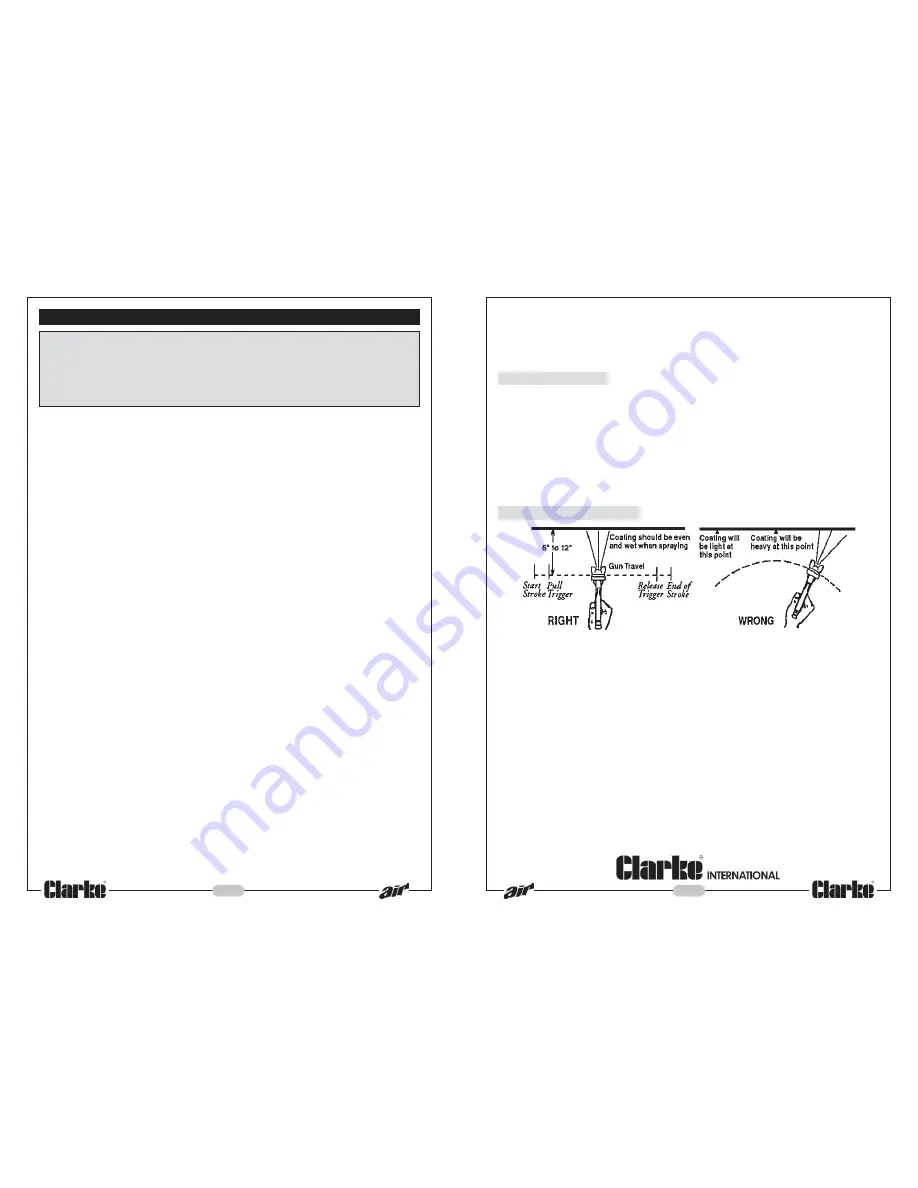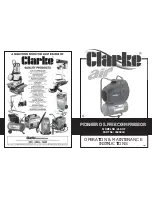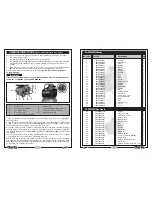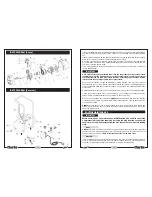
- 3 -
-12 -
SAFETY PRECAUTIONS
WARNING
As with all machinery, there are certain hazards involved with their operation and use.
Exercising respect and caution will considerably lessen the risk of personal injury.
However, if normal safety precautions are overlooked, or ignored, personal injury to the
operator, or damage to property may result.
It is in your own interest to read and pay attention to the following rules:
1.
COMPRESSED AIR IS DANGEROUS, NEVER
direct a jet of air at people or animals, and
NEVER discharge compressed air against the skin.
2.
DO NOT
operate your compressor with any guards removed.
3.
DO NOT
leave pressure in the receiver overnight, or when transporting.
4.
DO NOT
adjust, or tamper with the safety valves. The maximum pressure is factory set,
and clearly marked on the machine.
5.
DO NOT
operate in wet or damp conditions. Keep the machine dry at all times.
Similarly,a clean atmosphere will ensure efficient operation. Do not use in dusty or
otherwise dirty locations.
6.
DO NOT
exert any strain on electrical cables and ensure that air hoses are not tangled
or wrapped around machinery etc.
7.
ALWAYS
adjust the pressure regulator to the recommended setting for the particular
spray gun or tool being used.
8.
ALWAYS
protect yourself. Think carefully about any potential hazards which may be
created by using the air compressor and use the appropriate protection. e.g. Goggles
will protect your eyes from flying particles. Face masks will protect you against paint
spray and/or fumes.
9.
ALWAYS
make sure that children and animals are kept well away from the compressor
`and any equipment attached to it.
10.
ALWAYS
ensure that all individuals using the compressor have read and fully
understand the Operating Instructions supplied.
11.
ALWAYS
ensure that any equipment or tool used in conjunction with your compressor,
has a safety working pressure exceeding that of the machine.
12. Before spraying any material always consult paint manufacturers instructions for safety
and usage.
13. Some of the metal parts can become quite hot during operation. Take care not to
touch these until the machine has cooled down.
14. When disconnecting air hoses or other equipment from your compressor ensure that
the air supply is turned off at the machine outlet and expel all pressurised air from
within the machine and other equipment attached to it.
15. Electrical or mechanical repairs should only be carried out by a qualified engineer. If
problems occur, contact your Clarke dealer.
16. Before carrying out any maintenance, ensure the pressure is expelled from the air
receiver, and the machine is disconnected from the mains supply.
17. When spraying inflammable materials e.g. cellulose paint, ensure that there is
adequate ventilation and keep clear of any possible source of ignition.
1.
Immerse only the front end of the gun until solvent just covers the fluid connection.
2.
Use a bristle brush and solvent to wash off accumulated paint.
3.
Do not submerge the entire spray gun in solvent because:
a.
the lubricant in the gland packings will dissolve and the packings will dry out.
b.
the lubricant will dissolve causing harder operation and faster wear.
c.
residue from dirty solvent may clog the narrow air passages in the gun.
4.
Wipe down the outside of the gun with solvent dampened rag.
5.
Lubricate gun daily. Use a light machine oil on:
a.
fluid needle packing.
b.
air valve packing.
c.
fan control packing.
d.
trigger pivot point.
Coat the fluid control spring with vaseline.
Caution: Never use lubricants containing silicone as this may cause finish defects.
For a professional looking finish paint must be thinned. If the manufacturers
recommendations on thinning are not available, the following can be used as a general
guide: Water based paints (emulsions)
- 10-20% water
Oil based paints (gloss)
- up to 10% white spirit thinners
Cellulose paints
- up to 50% cellulose thinners
3. Handling The Gun
The first requirement for a good resultant finish is the proper handling of the gun. The gun
should be held perpendicular to the surface being covered and moved parallel to it. The
stroke should be started before the trigger is pulled and the trigger should be released
before the stroke is ended. This gives accurate control of the gun and material.
The distance between gun and surface should be 6 to 12 inches depending on material
and atomizing pressure. The material deposited should always be even and wet. Lap each
stroke over the preceding stroke to obtain a uniform finish.
NOTE: To reduce overspray and obtain maximum efficiency, always spray with the lowest
possible atomizing air pressure.
4. Spray Gun Maintenance


























